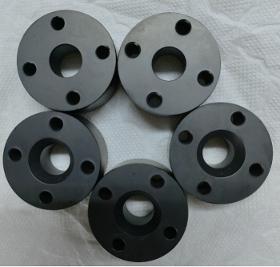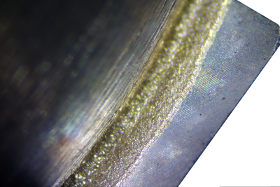- europages
- >
- COMPANIES - SUPPLIERS - SERVICE PROVIDERS
- >
- nitriding of metals
Results for
Nitriding of metals - Import export

SHENZHEN PROMOSTAR HARDWARE CO.,LTD
Germany
Nitriding treatment is a chemical heat treatment process in which nitrogen atoms penetrate the surface of the workpiece at a certain temperature and in a certain medium. The products treated with nitriding have excellent wear resistance, fatigue resistance, corrosion resistance and high temperature resistance. The general process of nitriding process :1. Pretreatment: clean, remove oil and dry the metal surface to ensure that the surface is clean and free of impurities. 2. Nitriding treatment: The metal is placed in an atmosphere containing nitrogen and treated at high temperatures to form a nitriding layer on the surface of the metal. 3. Post-treatment: Clean and cool the metal surface after nitriding to remove the residual nitride layer and prevent its oxidation. The nitriding process is of great importance for many industrial fields, such as tool manufacturing and automotive parts manufacturing.
Request for a quote
ROLLON GMBH
Germany
Sturdy and practical linear rails with radial ball bearing sliders. The X-Rail is a family of linear guides with radial ball bearing sliders for applications requiring cost efficiency and high resistance to corrosion. The linear guides with shaped raceways and the linear guides with flat raceways are available in stainless steel or galvanised or nitrided metal sheeting. With the T + U configuration, the X-Rail system can compensate for any axial misalignment in parallelism of the mounting surfaces.
Request for a quote
XIAMEN INNOVACERA ADVANCED MATERIALS CO., LTD
China
Aluminum nitride ceramics have excellent electrical and thermal properties, and are considered to be the most promising high thermal conductivity ceramic substrate materials. In order to seal the package structure, mount components and connect input and output terminals, the surface and interior of the aluminum nitride ceramic substrate need to be metallized. The reliability and performance of ceramic surface metallization have an important impact on the application of ceramic substrates, and firm bonding strength and excellent air tightness are the most basic requirements. Considering the heat dissipation of the substrate, it is also required to have high thermal conductivity at the interface between the metal and the ceramic. The metallization methods on the surface of aluminum nitride ceramics include: thin film method, thick film method, high melting point metallization method, electroless plating method, direct copper cladding method (DBC), etc.
Request for a quote
XIAMEN INNOVACERA ADVANCED MATERIALS CO., LTD
China
DPC Ceramic Substrate Advantages: > In terms of shape processing, DPC ceramic substrate needs to be cut by laser, the traditional drilling and milling machine and punch machine can not be accurately processed, so the combination force and line width is also more fine. > The crystal performance of the metal is good; > The flatness is good; > The line is not easy to fall off; > The line position is more accurate, the line distance is smaller, reliable and stable, can be through the hole and other advantages.
Request for a quote
XIAMEN INNOVACERA ADVANCED MATERIALS CO., LTD
China
AMB (Active Metal Brazing) is for joining ceramics that are not wetted by 'conventional' brazes.By applying active metal like titanium to be added to the braze alloy, to achieve chemically reacts with the surface of the parent ceramic.Due to the coefficient of thermal expansion of Al2O3 (7.1 ppm/K), Si3N4 (2.6 ppm/K) and AlN (4.7 ppm/K) is close to that of silicon (4 ppm/K), Direct Bond Copper (DBC) and AMB are suitable substrates for robust packaging of bare dice since such assemblies.AMB is the promising thick film technology which can be applied to Power Electronics, Automotive Electronics, Home Appliances, Aerospace, Others. INNOVACERA provide DBC, DPC, and AMB technology for customized ceramic substrates, welcome to consult more.
Request for a quote
WIGTEC FISCHEREDER KG
Germany
In the WTH 200.2, the following materials can be reliably brazed with active materials in a high vacuum. PCD (polycrystalline diamond) MKD (monocrystalline diamond) CVD diamond (chemical vapour deposition) PCBN (cubic boron nitride) and Hard metals as well Ceramics In the high-vacuum furnace WTH 200.2, our customers manufacture indexable inserts, dressing wheels, rotating tools and turning tools with blades made of natural diamond or MKD for polish turning. The vacuum brazing is flux-free. In the so-called active brazing process, titanium allows wetting of the surfaces. While cemented hard metals can also be inductively brazed, diamonds, CVD and ceramics must be actively brazed in a vacuum. When brazing PCD and PCBN, not only the hard metal substrate but also the PCD or PCBN layers are wetted.
Request for a quoteDo you sell or make similar products?
Sign up to europages and have your products listed
Results for
Nitriding of metals - Import exportNumber of results
6 ProductsCountries
Company type